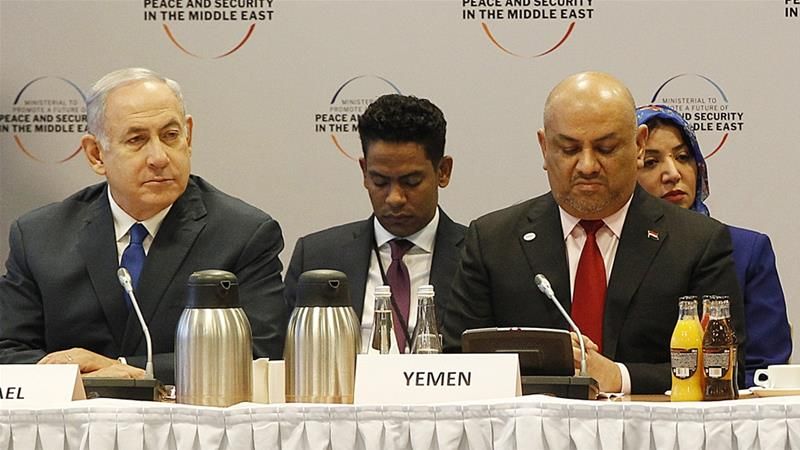
Local Editor
Israeli Prime Minister Benjamin Netanyahu, while seated next to the Foreign Minister of the resigned Yemeni regime Khaled al-Yamani on Thursday, hailed the Warsaw conference as “historic” – if only for the unprecedented seating arrangements.
The US, which co-hosted the Conference for Middle East Peace and Security as a major vehicle for the Trump administration’s campaign against Iran, most likely engineered those arrangements.
The event targeted the opponents of the anti-Iran campaign, at home and in Europe. It was also intended to boost Saudi Arabia, whose armed forces have been battling the popular Yemeni Houthi revolutionaries for four years, and the United Arab Emirate, whose army is fighting alongside the Saudis in Yemen.
For Israel, the event served as a huge campaign boon for Prime Minister Netanyahu whose Likud is campaigning for re-election on April 9. He was shown easily hobnobbing with world leaders on an international stage, notably in amicable first-time encounters with Arab rulers. His seating alongside the al-Yamani flashed around the media, the day after he met with Omani Foreign Minister Yusuf bin Alawi bin Abdullah.
That juxtaposition also carries a price. Secretary of State Pompeo used it as a symbol of the US administration’s expectations of Tel Aviv for a larger military role alongside the US, Saudi Arabia and the UAE in the Yemeni war.
Until now Israeli assistance to the resigned Hadi regime went through Saudi Arabia.
In Washington, President Donald Trump faced a hostile front to the campaign he is leading internationally against Iran when the House Democratic majority passed a resolution on Thursday for ending US military support for the Saudi-led coalition fighting in Yemen. The measure passed 248 to 177, and was supported by 230 Democrats and 18 Republicans.
Source: Yemenwatch.net